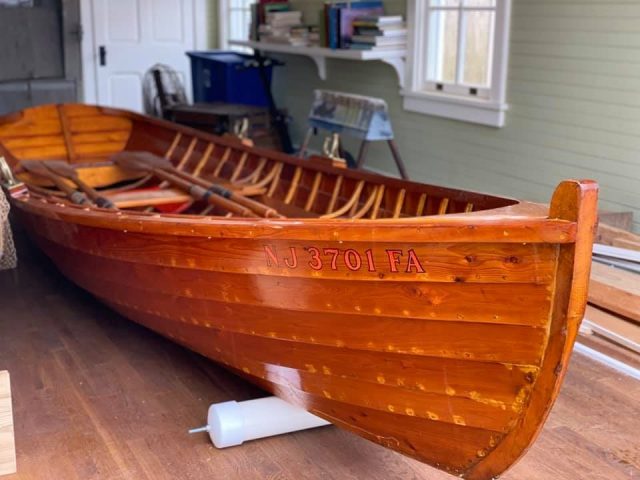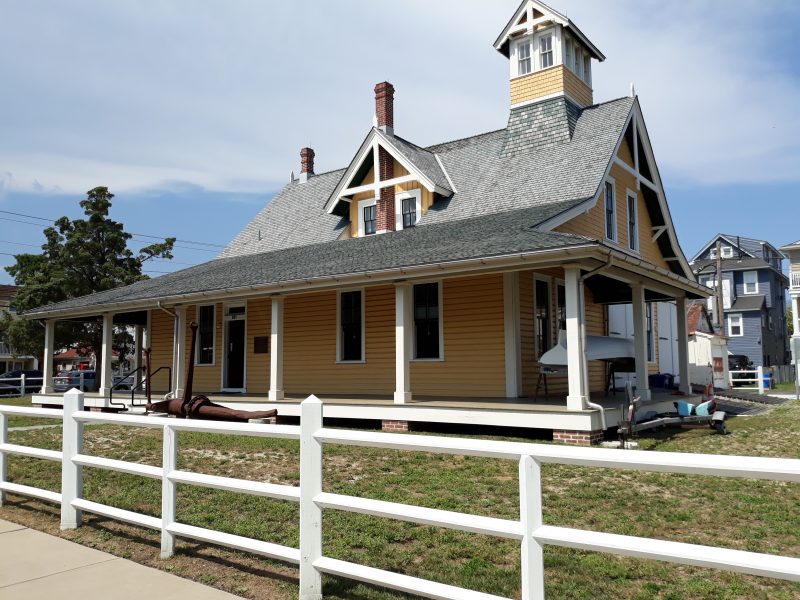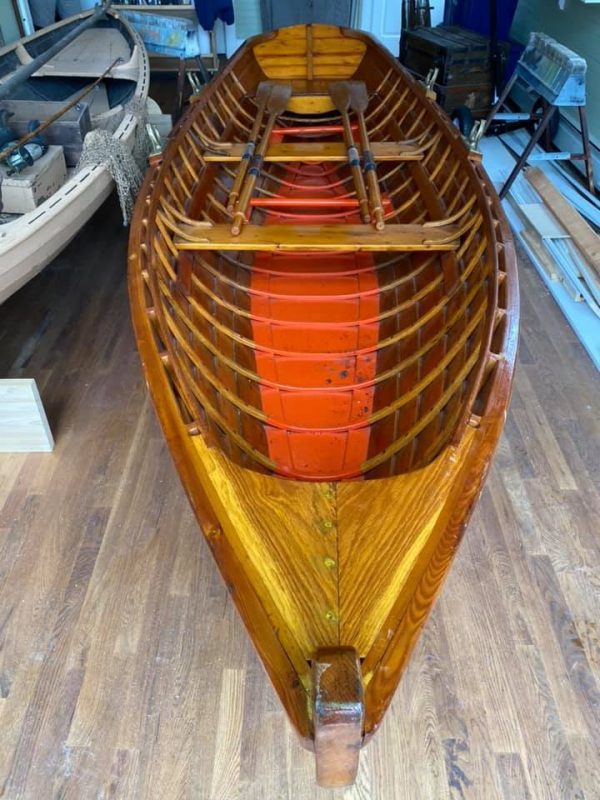
BY TIM KELLY
When John Loeper talks about the latest display piece acquired for U.S. Life Saving Station No. 30, he uses tones some men would reserve for a Carson Wentz touchdown pass — or a particularly tasty slice of Boardwalk pizza.
“I had no idea what to expect” said Loeper of his trip to rural Northwest New Jersey to pick up his prize, a meticulously maintained example of a small surfboat used in ocean rescues since the 1850s.
“Many times, when you look at a boat this old it’s ready for the boneyard or a fireplace,” Loeper said. “I certainly wasn’t expecting anything as pristine as this.”
The pristine object of Loeper’s affection is a 65-year-old Seabright skiff, commonly known as a surfboat, the smaller 17-foot variety, but of the same design dating back to the 1850s.
The Life Saving Station, at 801 East Fourth Street (the corner of Fourth and Atlantic Avenue), is Ocean City’s newest public museum.
It commemorates a time when ship traffic passed Ocean City was constant and wrecks were a regular occurrence.
However, its doors have been closed to the general public since the COVID-19 pandemic lockdown began in March.
The silver lining to the temporary closing?
“We have been using this time to research some things and to make the museum even better,” said Loeper, an Ocean City historian and foremost expert on the station.
One such moment occurred when the family of a deceased man was searching for a place to display the historic craft. The family connected with Loeper, who was happy to see what they had to offer.
Loeper and colleague Jack Brooks, a retired lifeguard and Ocean City resident, made the two-hour drive with low expectations.

“It’s almost flawless,” Loeper said of the craft. “It has been beautifully cared for and we’re not going to do too much (additional work) on it. It’s almost ready to have a display built around it and to have visitors enjoy seeing it.”
Unlike traditional museums, the formal displays at Life Saving Station No. 30 are few.
Instead, the building has been fitted with the equipment and furnishings one might expect to see during its heyday in the late 19th and early 20th centuries.
The U.S. Life Saving Service was an ancestor of today’s Coast Guard.
Hundreds of the Life Saving Station buildings lined the East Coast at the turn of the 19th century, and precious few remain now.
At first manned by volunteers and eventually paid “surfmen,” the station was the home base for rescues at sea during a time that cargo traffic on the Atlantic was the main way to import and move goods around the country.
“The ocean was the superhighway of its day for moving freight,” Loeper said. “Shipwrecks were common, and the surfmen saved numerous lives.”
In many cases their rescue vehicles were larger surfboats than the new addition Loeper and Brooks picked up earlier this week.
But it is the same basic design that endures to this day in the lifeguard boats around South Jersey and elsewhere.
“A smaller boat like this one might be used for fishing or on certain rescues.”
In the days before the telephone, the people rescued from shipwrecks stayed at the station until their relatives could be tracked down.
“Everyone had to eat — the surfmen and the shipwreck victims they saved,” Loeper explained. “A boat like this one would be used for fishing, crabbing, clamming and a host of other purposes.”
Retired lifeguard and fellow historian Fred Miller said a skiff like the one acquired by the museum “was used when the Ocean City Beach Patrol won a national lifeguard competition in the 1920s.”
Loeper said the only modification expected to be made to the craft will be a coat of gray paint on the bottom of the boat’s interior, more historically accurate than the current orange color.
In addition to displaying the boat, Life Saving Station museum personnel will be taking it out in the water from time to time.
“It’s in such great shape and it is a relic,” Loeper said. “Taking this boat out will be kind of like driving a Model T automobile.”
“This boat is a great treasure,” he added. “It’s going to be quite an addition to the station.”
For more information and updates about Ocean City’s U.S. Life Saving Station No. 30, visit the website, www.uslifesavingstation30.org.






